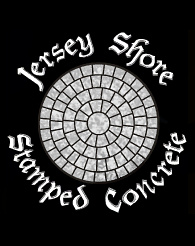Fixing Slippery Stamped Concrete Near Pools | Monmouth County NJ, Manalapan, Colt Neck, Rumson, Freehold, Marboro, Howell
The combination of pools and stamped concrete doesn’t necessarily spell disaster. For one thing, when a stamped concrete surface near a pool is slick, a topical sealer, not the texture, is often the culprit. That’s good to know when you’re hoping to keep customers from slipping on their new surface.
There are several techniques and products you can use to make a stamped surface less slippery when wet. One of the standard methods involves mixing a nonslip additive You can also broadcast more of the ground-up polymer onto the wet surface while the sealer is still tacky. Some products are available in different particle sizes for more traction or less.
The color hardener route
Other contractors, such as John, president and CEO of Jersey Shore Stamped Concrete NJ., have found a method they say works for them.
“We like to broadcast a light coat of color hardener just prior to applying the release and stamping. We don’t trowel it in — we just throw it on,” John says. “This is a more permanent slip-reduction technique, rather than putting a polymer grit in the sealer. It embeds a little bit of aggregate into the stamped surface.”
Seeding the concrete with color hardener has advantages over combining a sealer with additives,John says. “It’s not as prominent as polymer grit broadcasted on the sealer. It also doesn’t wear off to the same extent as a sealer. When a sealer breaks down, you lose the additive as well.”
Besides seeding to help with slip resistance, John advises contractors to keep the concrete surface’s slope minimal. “Keep the grade as minimal as possible to increase the coefficient of friction but still control the flow of the surface water. Also, try to use patterns that have a more aggressive texture in the stone.”
For more info or a Free estimate call today
